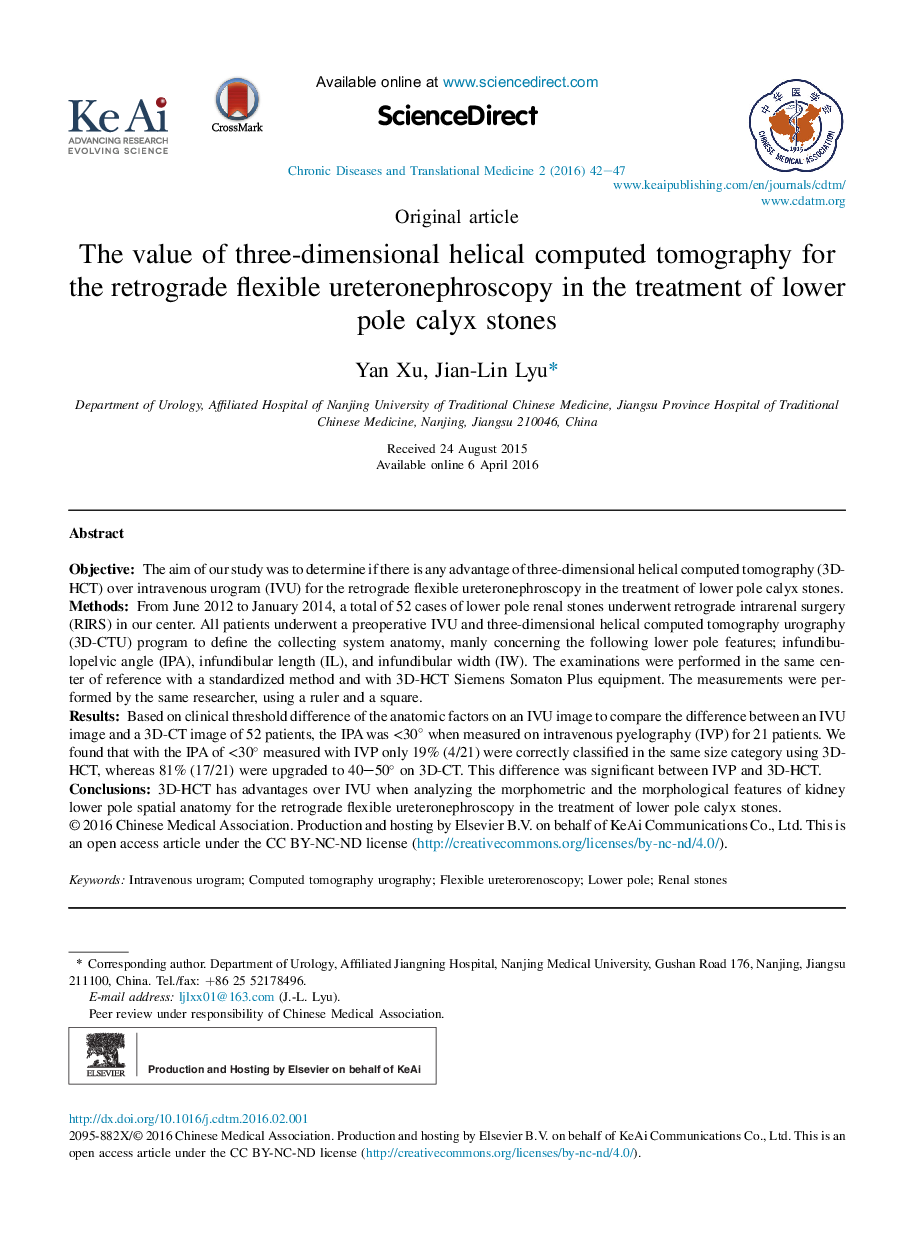| Article ID | Journal | Published Year | Pages | File Type |
|---|---|---|---|---|
| 3459881 | Chronic Diseases and Translational Medicine | 2016 | 6 Pages |
ObjectiveThe aim of our study was to determine if there is any advantage of three-dimensional helical computed tomography (3D-HCT) over intravenous urogram (IVU) for the retrograde flexible ureteronephroscopy in the treatment of lower pole calyx stones.MethodsFrom June 2012 to January 2014, a total of 52 cases of lower pole renal stones underwent retrograde intrarenal surgery (RIRS) in our center. All patients underwent a preoperative IVU and three-dimensional helical computed tomography urography (3D-CTU) program to define the collecting system anatomy, manly concerning the following lower pole features; infundibu-lopelvic angle (IPA), infundibular length (IL), and infundibular width (IW). The examinations were performed in the same center of reference with a standardized method and with 3D-HCT Siemens Somaton Plus equipment. The measurements were performed by the same researcher, using a ruler and a square.ResultsBased on clinical threshold difference of the anatomic factors on an IVU image to compare the difference between an IVU image and a 3D-CT image of 52 patients, the IPA was <30° when measured on intravenous pyelography (IVP) for 21 patients. We found that with the IPA of <30° measured with IVP only 19% (4/21) were correctly classified in the same size category using 3D-HCT, whereas 81% (17/21) were upgraded to 40–50° on 3D-CT. This difference was significant between IVP and 3D-HCT.Conclusions3D-HCT has advantages over IVU when analyzing the morphometric and the morphological features of kidney lower pole spatial anatomy for the retrograde flexible ureteronephroscopy in the treatment of lower pole calyx stones.
